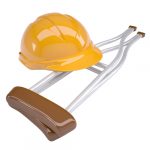Category: Special Topics in Safety Management
Safety is a process, and as such, needs to be managed. This section offers resources to create a viable safety program, sell it to senior management, train supervisors and employees in using it, and then track and report your progress. Look also for ways to advance your own skills in these areas, both for your current job, and those that follow.
When an employee is out of work due to an injury or illness, it’s in everyone’s best interest to get that person back on the job safely and as soon as possible.. For employers, an effective return-to-work program can reduce workers’ compensation costs and improve employee morale and productivity. For employees, returning to work can […]
Take these steps before, during, and after claims are filed to reduce workers’ comp costs. Workers’ compensation costs keep rising. But fortunately, there are many measures your organization can take to reduce costs.Before a Claim Is Ever FiledTo reduce upfront spending on workers’ compensation: Implement an effective safety program. This reduces your workers’ comp costs […]
Combustible dust explosions have destroyed workplaces and killed employees. Take action now to prevent a disaster. A comprehensive approach to preventing and controlling combustible dust hazards is essential to prevent deadly explosions. Some general rules include the following: Do not allow employees to use compressed air, dry sweeping, or other cleaning methods that can disperse […]
OSHA has issued guidance for its inspectors to determine if makers and importers of chemicals have correctly classified products as combustible dust hazards under the revised Hazard Communication (HazCom) Standard (or HCS). The recent guidance, issued as an interpretation and sent to OSHA regional administrators, affects manufacturers and importers of chemicals (“classifiers”), not users. In […]
Keep older workers safe on the job with these simple strategies.
Statistics show that young workers are twice as likely to be injured on the job as older employees. Reasons young workers may be injured include lack of: Job experience Knowledge Skills Understanding of risks, safety rules, and procedures Good judgment and impulse control Safety training Young workers have more accidents at work because they lack […]
Do your employees know how to conduct a walkaround as part of a preoperational forklift inspection? The first step toward safe forklift operation is conducting the preoperational inspection. Forklift operators should conduct the inspection at the start of each work shift to ensure that the forklift will work properly. According to OSHA, 1 in 15 […]
Prevent deadly forklift tipover accidents by ensuring operators are properly trained to recognize hazardous situations and circumstances. Antonio Toro was preparing to move large bundles of steel at a flood control project. As he positioned his forklift, it tipped, pinning him. By the time emergency responders reached him, Toro was dead. Forklifts are designed to […]
Hand injuries can be especially traumatic, stripping away not only a worker’s ability to work, but also the ability to perform activities of daily living. Dr. Gregory A. Merrell is a surgeon at the Indiana Hand Center, the largest, free-standing hand surgery center in the country. The facility is also the nation’s leading training center […]
Here’s a handy checklist to help you identify and control hand hazards in your workplace.










